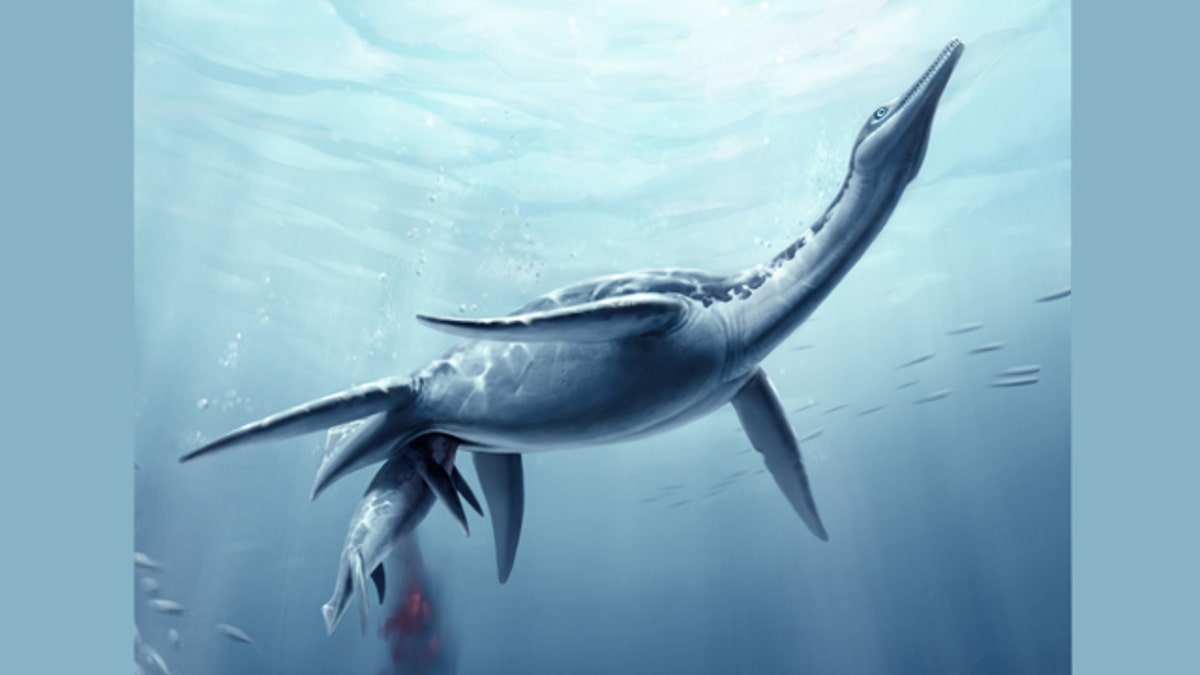
A plesiosaur giving birth. (Natural History Museum of Los Angeles County)
The unique 78-million-year-old fossils of an adult plesiosaur and its unborn baby may provide the first evidence that these ancient animals gave live births, according to scientists.
The 15.4-foot-long adult specimen is one of the giant, carnivorous, four-flippered reptiles that lived during the Mesozoic Era. Dr. F. Robin O’Keefe of Marshal University in Huntington, W. Va., and Dr. Luis Chiappe, director of the Natural History Museum’s Dinosaur Institute, have determined that the skeleton contained within the creature is an embryo -- including ribs, 20 vertebrae, shoulders, hips, and paddle bones.
The research -- to be published August 12 in Science magazine -- establishes that plesiosaurs gave birth to live young, rather than hatching their offspring from eggs on land.
"Scientists have long known that the bodies of plesiosaurs were not well suited to climbing onto land and laying eggs in a nest," O'Keefe said. "So the lack of evidence of live birth in plesiosaurs has been puzzling. This fossil documents live birth in plesiosaurs for the first time, and so finally resolves this mystery.
O’Keefe also believes the find gives further clues of plesiosaur behavior.
“Many of the animals alive today that give birth to large, single young are social and have maternal care,” O’Keef continued. “We speculate that plesiosaurs may have exhibited similar behaviors, making their social lives more similar to those of modern dolphins than other reptiles."
Plesiosaurs have no known living relatives, but were common in the world's oceans during the age of dinosaurs. They were among the top predators in the Western Interior Seaway, the vast, tropical body of water that split North America during the Cretaceous when waters from the Arctic Ocean and the Gulf of Mexico flooded onto the continent and met.
The remarkable NHM specimen was discovered in 1987 by Charles Bonner on the Bonner Ranch in Logan County, Kan. Virtually complete except for parts of the adult's neck and skull, the "mother" specimen and her baby were given extensive conservation by NHM and then mounted for display with the supervision of O'Keefe and Chiappe.
The specimen is currently on display in the Dinosaur Hall, the new 14,000-square-foot exhibition at NHM featuring more than 300 fossils and 20 complete mounts of dinosaurs and sea creatures.
